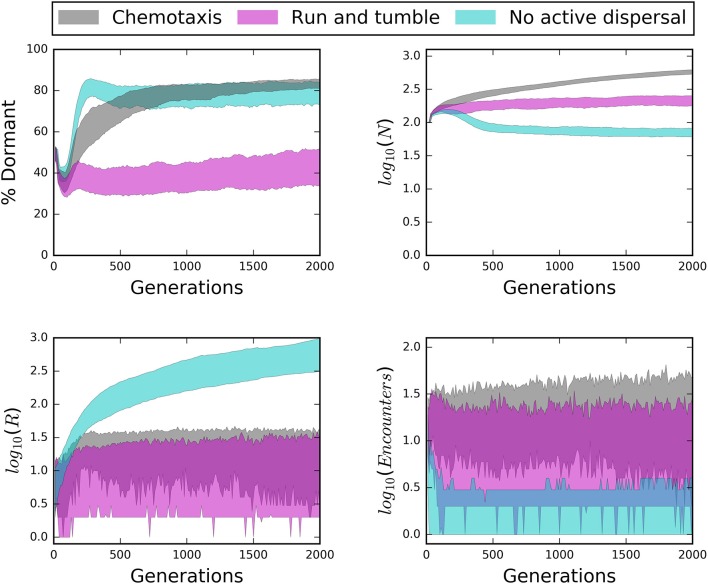Figure 7.
Time series of structured environments reveal the influence of dispersal mode (i.e., chemotaxis, “run and tumble,” no active dispersal) on seed bank size (% Dormant), total abundance (N), total resources (R), and the number of encounters. Chemotaxis generally produced the largest seed banks while “run and tumble” produced the smallest seed banks, even though chemotaxis resulted in the greatest encounters; a potential consequence of the energetic cost of chemotaxis. Under passive dispersal, the community was largely dormant, small in abundance, and experienced low encounters even as resource particles accumulated.

